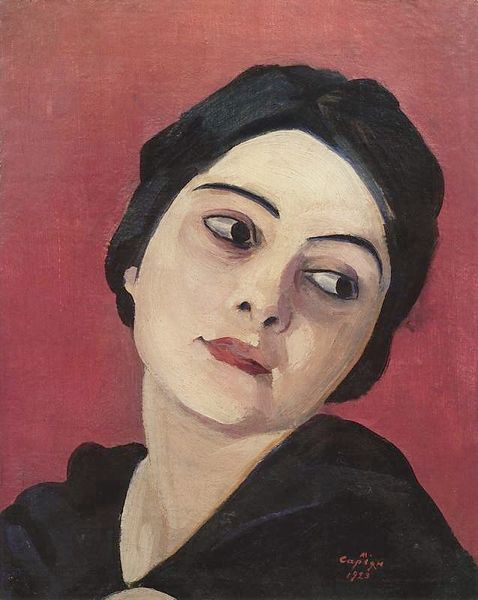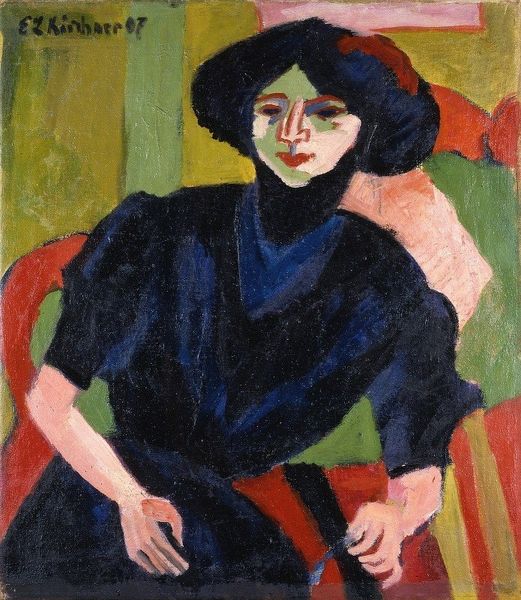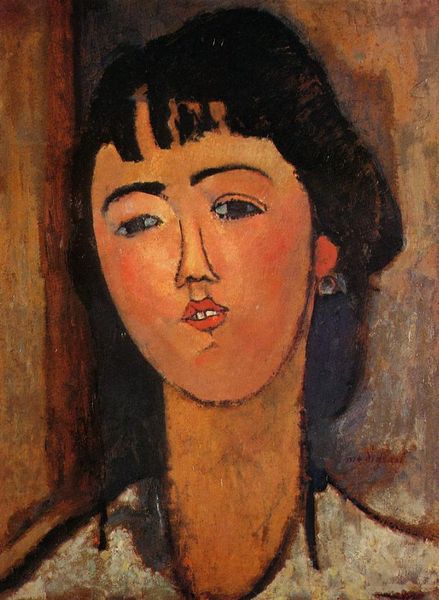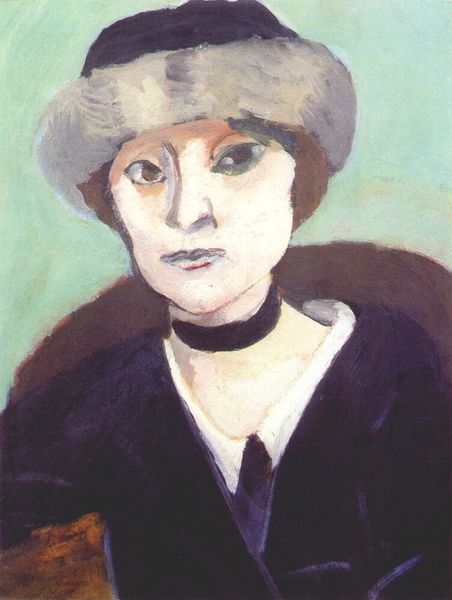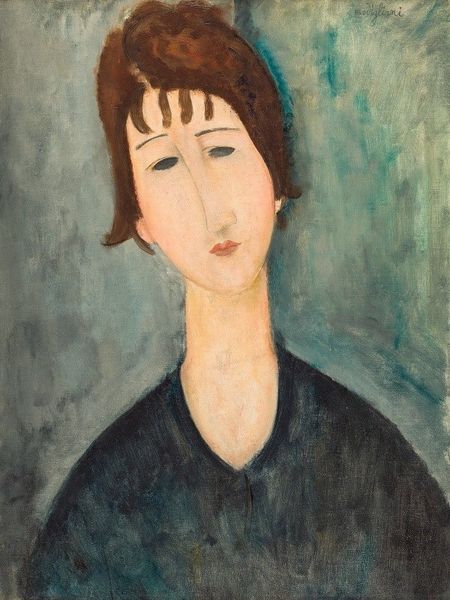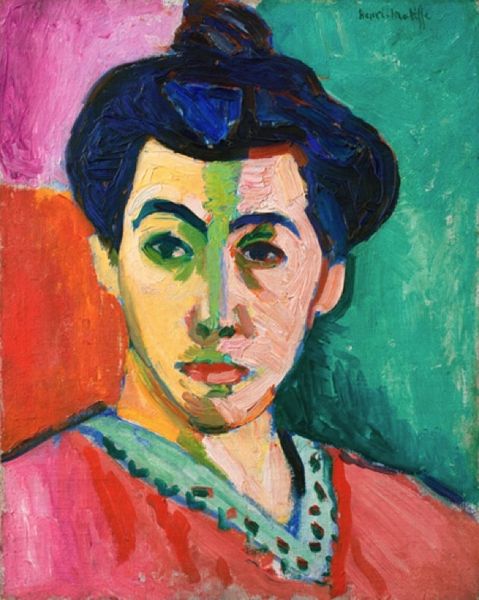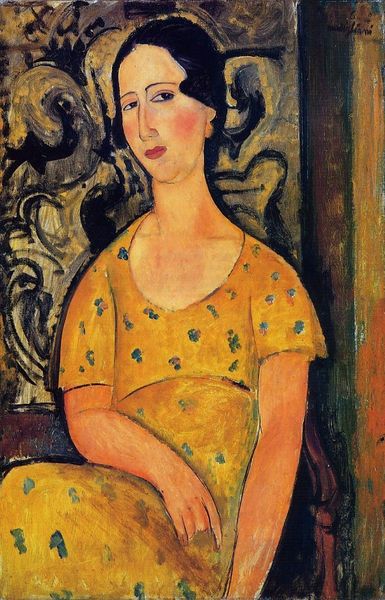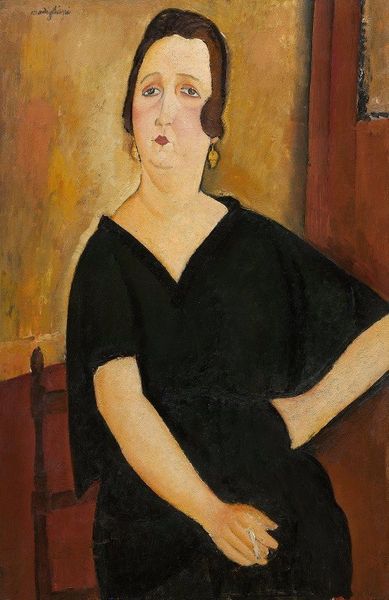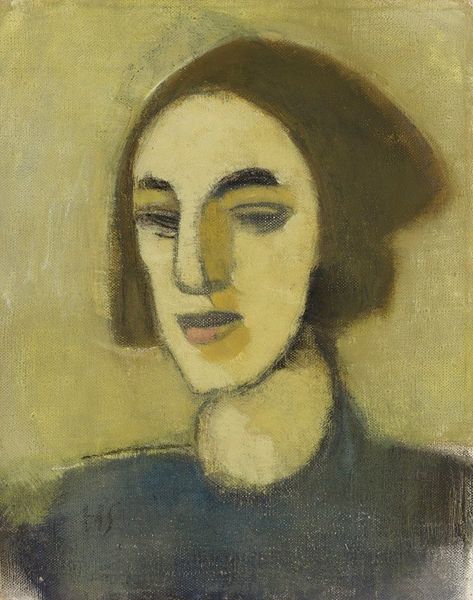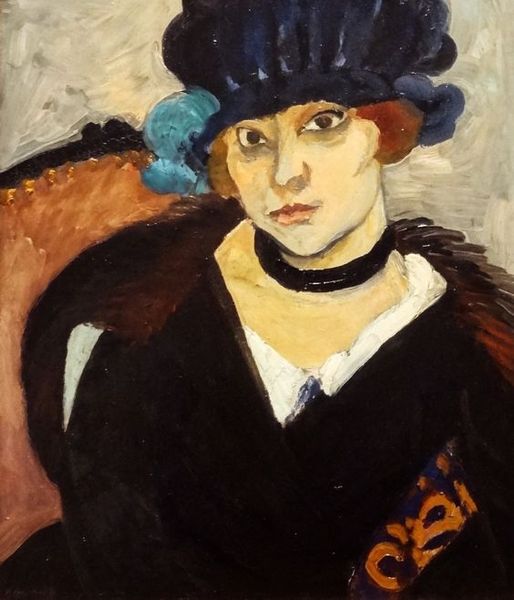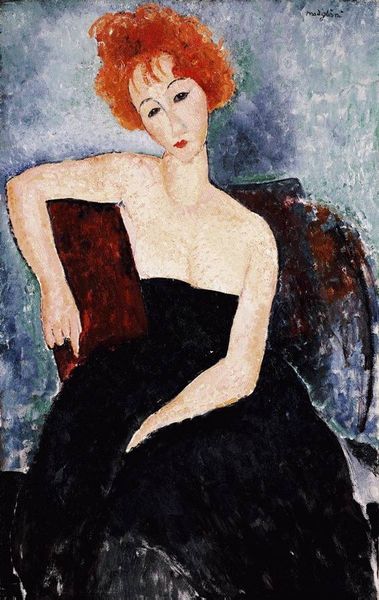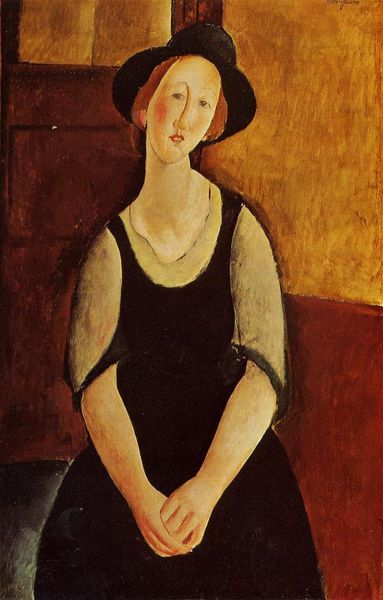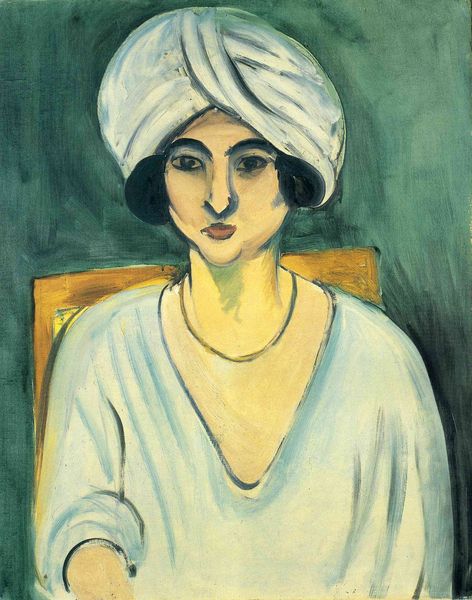
painting, oil-paint
#
portrait
#
fauvism
#
painting
#
oil-paint
#
modernism
Dimensions: 73 x 60 cm
Copyright: Public domain US
Curator: We are looking at André Derain's "Madame Derain in Green," painted in 1907. It's a striking example of his Fauvist work. What is your immediate response to this portrait? Editor: There is a profound sense of introspection emanating from the sitter's gaze, it feels as if she is lost in contemplation, a modern-day secular icon capturing a transient, personal moment of the modern era. Curator: Derain employed oil paint in a very liberated manner here, particularly for its time. You notice the flatness in areas, the way the shadow on her neck almost seems arbitrary? The color itself has a tangible texture. One wonders about Derain's brushstrokes—how they embody the freedom of Fauvism, liberated from academic constraint to depict only the emotional essence of the subject through color and form, truly an example of material and social emancipation! Editor: The symbolic palette choices really draw the eye. Note the cool detachment of the blues in the background compared to the warm flesh tones and vibrant lips. Green is often a symbol of envy, but also renewal. Considering its title and Fauvist origins, do you think Derain saw his wife through a lens of growth and vitality, or perhaps a touch of disquiet? Curator: Considering the broader social context, the materials used—the manufactured oil paints made widely available by industrialization allowed for a democratizing expression! Cheap pigment liberated an entire movement; challenging older ideas around luxury art. Perhaps Derain didn’t "see" these colours; perhaps he merely used what was economically viable at the time for making portraits for the upper class! Editor: Fascinating. So the red, then, carries less a symbolic weight of passion or anger but represents mass availability in turn-of-the-century pigment factories? Curator: Exactly. Though Madame Derain remains forever caught in a green time capsule... I'm also mindful that such vibrant greens are difficult to make durable... which has material implications over its future existence. Editor: It really gives one something to think about: color as consumer commodity versus color as psychological experience! Curator: Precisely; and both approaches expand our understanding.
Comments
No comments
Be the first to comment and join the conversation on the ultimate creative platform.
